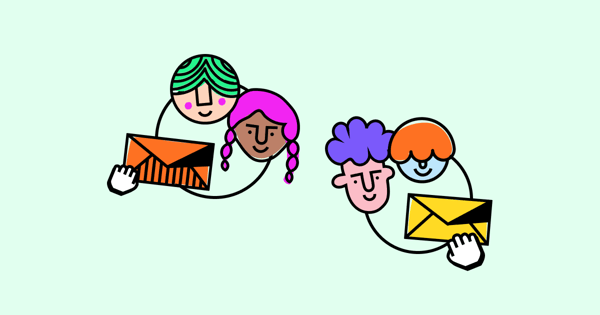Every one of your customers is as unique as a unicorn riding a unicycle. It doesn’t make marketing easy. They expect to be treated as such, even if you’ve got hundreds or thousands of unicorns in your customer base.
One thing you can do is send personalized, targeted emails. Marketers agree that the most effective email marketing strategies are subscriber segmentation (78 percent), message personalization (72 percent), and email automation (71 percent).
In this post, we’re going to cover all of the above to help you implement effective customer segmentation strategies that drive greater engagement and ultimately more sales.

What Is Customer Segmentation?
Customer segmentation is the first step in your ecommerce personalization strategy. That’s good news given that:
- 90 percent of leading marketers say personalization significantly contributes to business profitability (source)
- 61 percent of consumers expect brands to tailor experiences based on their preferences (source)
- 91 percent of consumers are more likely to shop with brands who recognize, remember, and provide them with relevant offers and recommendations (source)
In a nutshell, it’s about (metaphorically) cutting and slicing your audience into groups—or segments, if you will—based on shared behaviors or characteristics. You might have a segment for new email subscribers, one for high spenders, and another for lapsed customers.
The whole point of ecommerce customer segmentation is to share personalized offers and messaging with those segments. For instance, you might send everyone in your “new subscriber” segment an overview of your brand story, then follow up with a discount code for first-time buyers.
According to Jessica Totillo Coster, from Ecommerce Badassery, segmentation and automation has come a long way in the past few years, allowing ecommerce marketers to drill down in their targeting.
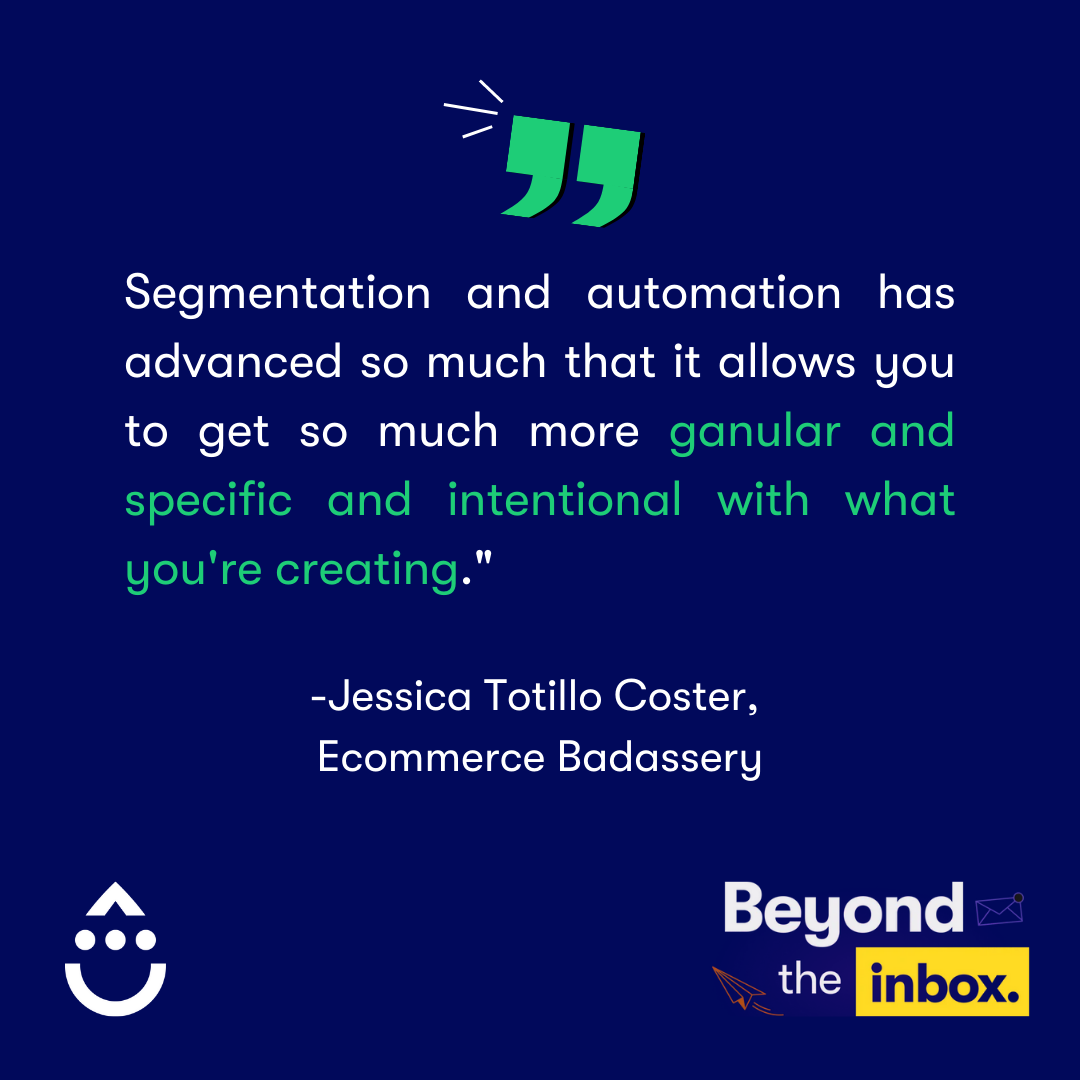 Without segmentation, you’re limited to targeting every customer with the same generic promotions, massively limiting their effectiveness.
Without segmentation, you’re limited to targeting every customer with the same generic promotions, massively limiting their effectiveness.
Why You Should Segment Customers
1. Enhance Personalization
Customer segmentation allows you to speak to each customer on their level. You understand what drives that individual, how and why they shop, and are able to cater to the customer experience to them.
The great thing is that 80 percent of customers are more likely to do business with companies that provide personalized experiences.
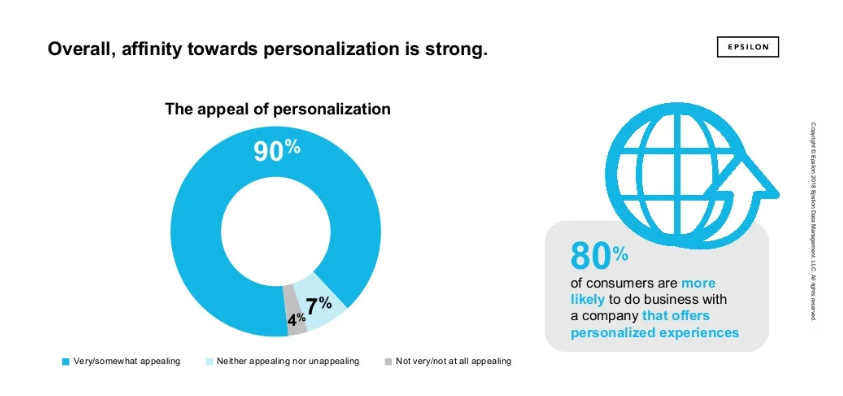
2. Optimize Your Marketing and Sales Process
When you split your customers into groups with similar traits or behaviors, patterns begin to emerge. You can see how, why, and when certain segments engage with your company or take action.
We recently spoke with Brooks Hitzfield from Seven Sons Farm, who explained why segmentation was so important for their ecommerce store.
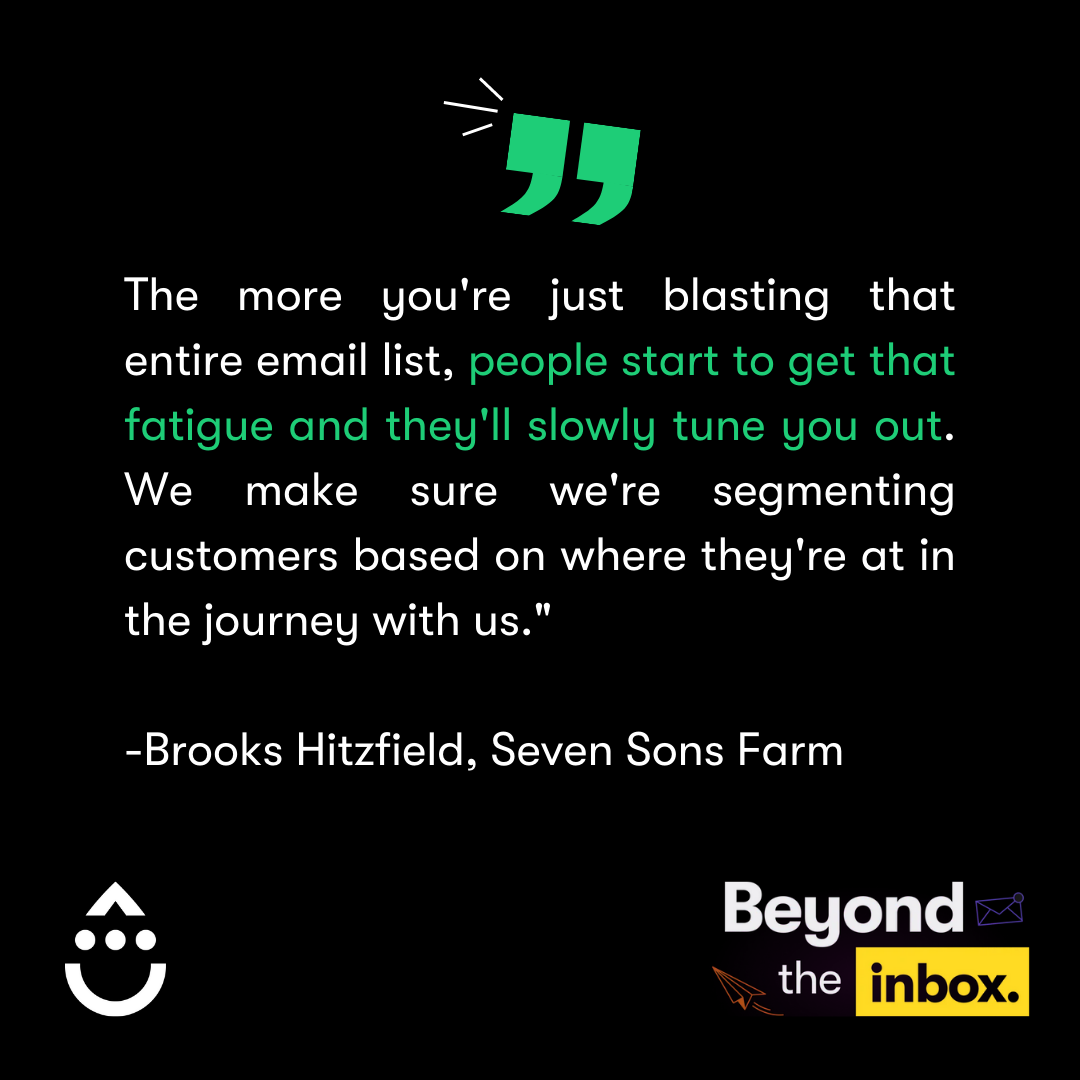 This means you can optimize the customer journey. You have the insights to show you what exactly will encourage different customer segments towards the next step of the customer lifecycle.
This means you can optimize the customer journey. You have the insights to show you what exactly will encourage different customer segments towards the next step of the customer lifecycle.
3. Boost Revenue
Customer segmentation allows you to reach the right customer with the right message at the right time. So you’ll be making sales out of the wazoo.
The data backs this up. Segmented campaigns have approximately 14 percent higher open rates and 100 percent higher click rates than non-segmented campaigns. Plus marketers that use segmentation see an increase in revenue of up to 760 percent.
7 Types of Customer Segmentation (With Examples)
1. Demographic
Demographics are the general characteristics of social groups such as age, occupation, marital status, and the like. This information can be used for demographic segmentation, which will help you send more relevant information to them.
When you know a group’s demographic traits you can market to them in a way that they relate to. For instance, the way you market to Gen Z will likely be very different from the way you market to baby boomers.
The following email is clearly geared towards a particular demographic group:
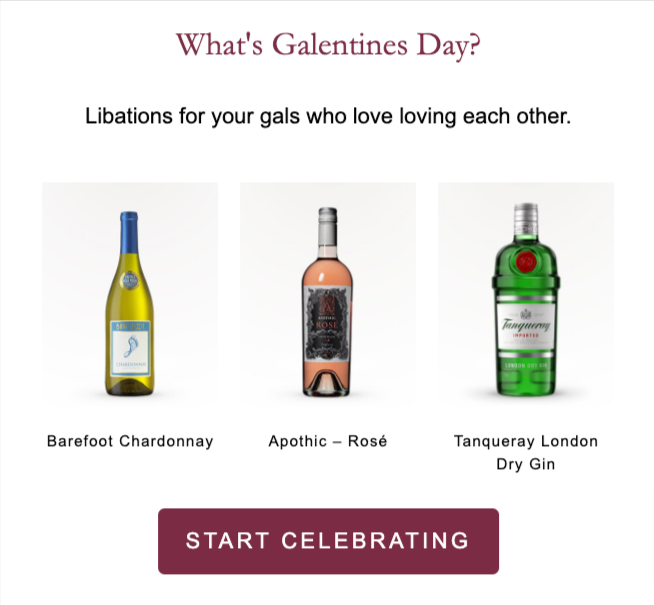 The most likely target for this “Galentine’s” offer is single women. If the brand has segmented the campaign, they may have sent different offers to different demographics. Or simply used this campaign to target one particular demographic group of its audience.
The most likely target for this “Galentine’s” offer is single women. If the brand has segmented the campaign, they may have sent different offers to different demographics. Or simply used this campaign to target one particular demographic group of its audience.
You can collect demographic data on your audience through surveys, public records, and analytics tools.
2. Psychographic
Psychographics go a little deeper than demographics. They are more like personality traits such as the customer’s values, interests, and desires.
It’s important to understand psychographics so you can target customers based on what they truly care about. When you’re able to show that your brand has similar values to the customer, they’re more likely to feel an affinity with your brand and choose it over others.
This email draws on psychographics:
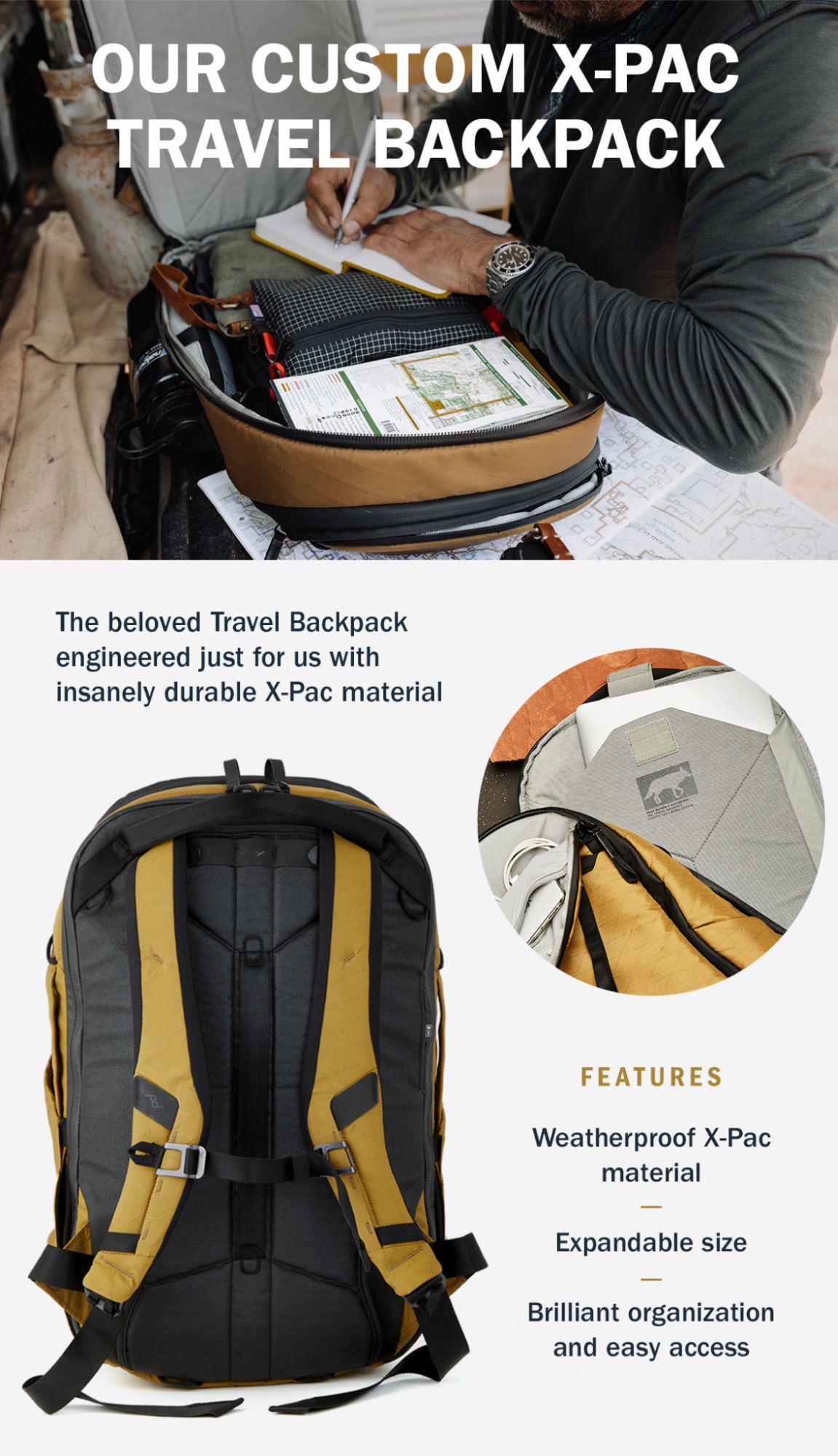 It targets outdoorsy, nature-loving, adventurous types as you can see from the content and imagery. Hence, the brand is also targeting a group that has an interest in having family fun in the great outdoors.
It targets outdoorsy, nature-loving, adventurous types as you can see from the content and imagery. Hence, the brand is also targeting a group that has an interest in having family fun in the great outdoors.
The best way to get psychographic information on your audience is to conduct customer surveys. Perhaps, you have one group that is outdoorsy and another that likes cozy nights in. The messaging for the same product would be different for these different audiences, of course.
3. Geographic
Geographic segmentation means splitting people into groups according to their location.
You might need to do this to ensure that your offers and content are relevant to recipients. For instance, it’d be no use sending a customer who lives in California a 15 percent discount on winter coats.
You may also want to pick up on aspects of local culture to make people feel closer to your brand. For example, local tastes and slang might be part of your messaging.
In this email, we can see a different kind of geographic targeting:
 There’s a group of young people standing in front of some fabulous graffiti art. To me, this indicates an urban environment. You may wish to alter your content according to the setting in which segments live, e.g. suburban vs. city vs. rural.
There’s a group of young people standing in front of some fabulous graffiti art. To me, this indicates an urban environment. You may wish to alter your content according to the setting in which segments live, e.g. suburban vs. city vs. rural.
You can use analytics data to find the location of site visitors. You’ll need to do further research into other aspects of those locales, e.g. culture, environment, and population.
4. Behavioral
One of the most important strategies is to segment customers according to their behaviors, i.e. interactions with your brand. These behaviors might be that they’ve bought from you previously, placed something in their cart, browsed a certain category, and so on.
Customer behaviors provide so many insights. You’ll learn aspects such as what products they’re interested in and how close they are to converting. Then you can determine what actions to take next to move them along in their journey.
Here’s an example of a behaviorally targeted email from iNNBEAUTY:
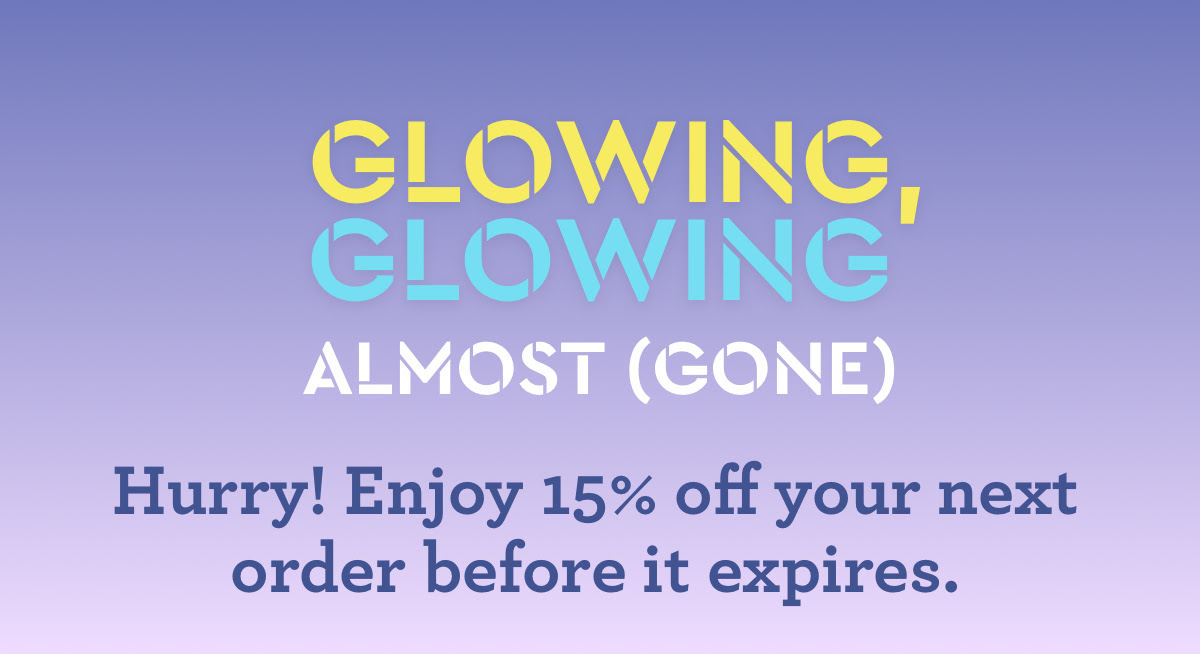 The customer hasn’t yet used their discount code and so they’ve received this reminder.
The customer hasn’t yet used their discount code and so they’ve received this reminder.
Those reminders don't always have to be an email. A great example comes from Lindsay Dreyer from Haute Hijab, who explains how they tailor their messaging around where the customer is in their purchase journey. In our recent episode of Beyond the Inbox, she highlights how important getting that second purchase is, and how she uses SMS to keep Haute Hijab top-of-mind.
To segment customers according to their behaviors you’ll need to use a tool such as Drip that picks up on certain behavioral triggers. When customers take a particular action or don’t as is the case in the above example, they’re placed into an automated workflow customized to them and their journey.
5. Value-Based
We’re not talking about customer principles here, but rather the financial value of a customer. You might measure this based on the number of purchases, average order value, and lifetime value of the customer.
This kind of segmentation helps your sales strategy. For instance, you can work on the lower value segment to encourage them to level up, e.g. through cross-sells. And at the same time reward the upper tier segment for being loyal customers. Naturally, this encourages them to carry on being a high-value customer.
You might send an email like this to a low-value customer:
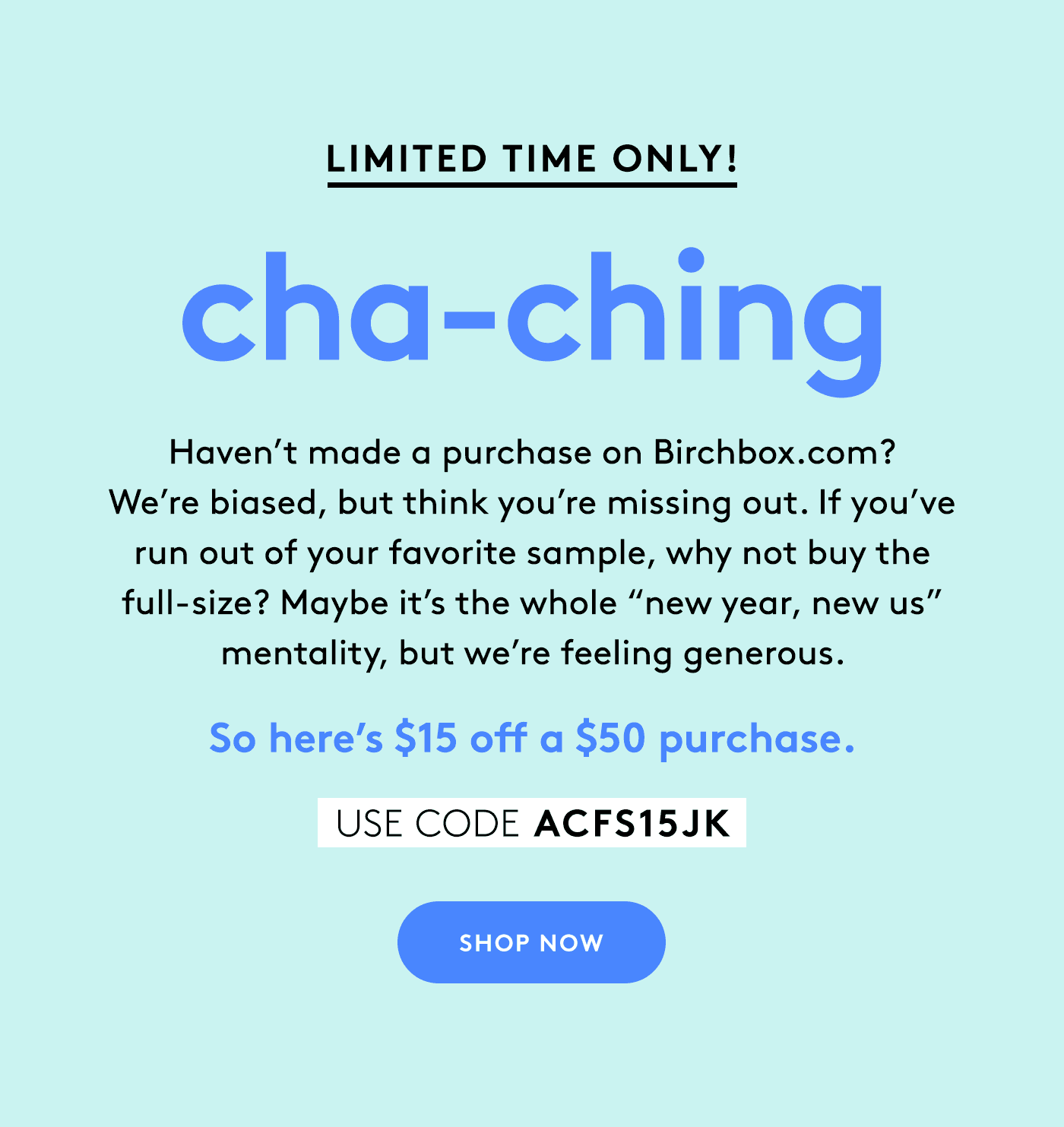
There’s a ton of social proof in this email as it talks about “best-selling products” that are “flying off the shelves”. To a low-value customer it says here are the kind of things you should be buying from us and there’s an offer to seal the deal.
To discover the value of customers, you’ll need to monitor the value of their purchases over time and compare these figures to the averages.
6. Source
It helps to know which campaign brought a customer to your site and/or encouraged them to subscribe. Perhaps a particular type of offer or content was the motivating factor.
This provides insight into customer preferences. With this information, you can continue to make communications and offers super relevant.
It makes customers more likely to convert. Not only that, they’re less likely to unsubscribe due to irrelevant messages they may consider to be spam.
Take a look at this email:
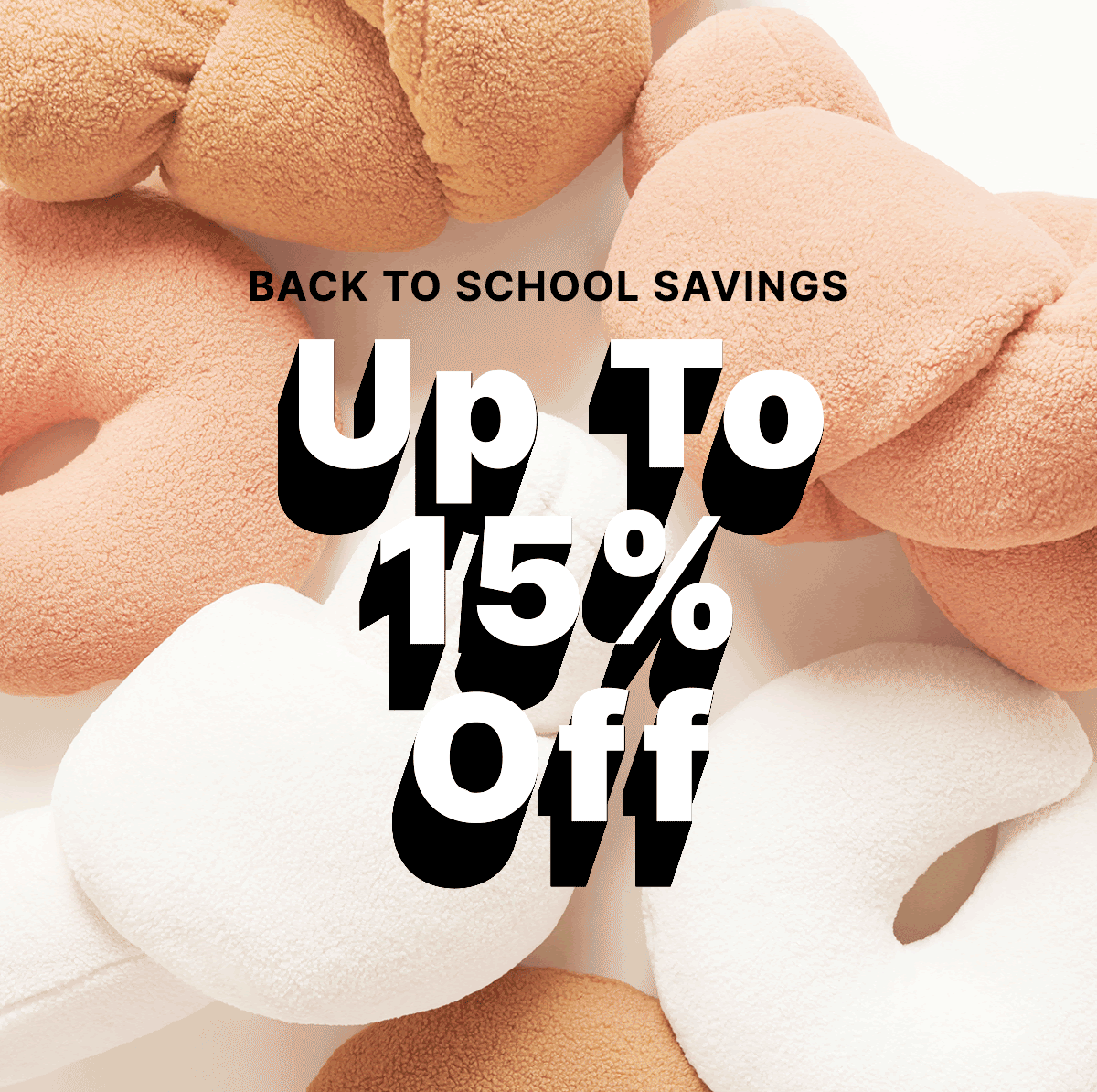 Perhaps the customers in this segment have responded to back-to-school deals in the past. Thus, it’s a good idea for the company to entice them with this seasonal offer again.
Perhaps the customers in this segment have responded to back-to-school deals in the past. Thus, it’s a good idea for the company to entice them with this seasonal offer again.
To track the source of visitors, again, you’ll need to use an analytics tool. If you want to dig deeper into specific campaigns you can use UTM parameters. These are a sort of tracking code you place on a link.
7. Requirements-Based
Why does the customer need your product? What is it about your product in particular that benefits them? Answer these questions to segment customers according to their needs and requirements.
The cool thing about this customer segmentation strategy is that you can market your products in a way that draws on particular pain points or what appeals to a particular group. It’s a way to be super precise with your content.
The company Hydrant, for instance, sells hydration packets. They’ve cleverly customized their products to fit into four categories based on customer needs—hydrate, energy, immunity, and sleep.
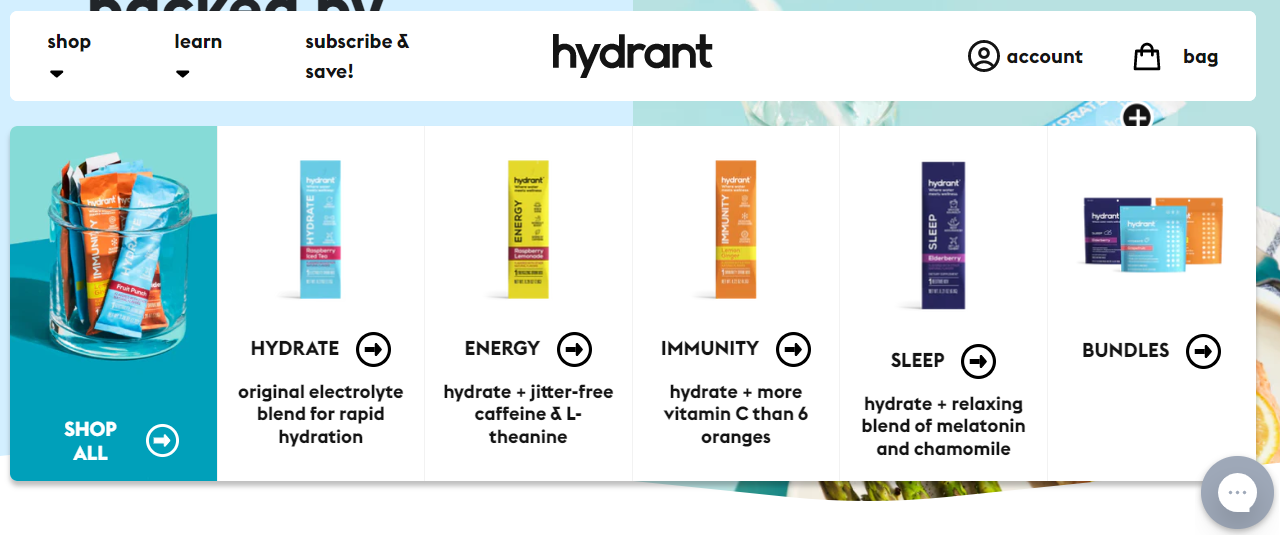 It appears that the company gathers customer pain points via an onboarding quiz, that asks questions on how the customer wants to use the product, what time of day they feel dehydrated, and so on.
It appears that the company gathers customer pain points via an onboarding quiz, that asks questions on how the customer wants to use the product, what time of day they feel dehydrated, and so on.
How to Implement and Use Customer Segmentation
1. Collect Customer Data
Customer information is the basis of everything here. You can’t group customers if you don’t know anything about them.
Soon enough third-party data will be extinct. However, you can collect first-party data on customers that consent to it. In other words, you can track behaviors on your site and app, as well as engagements with your brand; just nothing outside of that sphere.
You’ll also want to explore your analytics tools to get certain info, such as visitor sources, demographics, and so on.
2. Choose a Segmentation Model
The way you segment customers will depend on your campaign goals and overall goals. Choose a segmentation model based on your desired outcomes.
For instance, it would be useful to use behavioral segmentation as the basis of an abandoned cart campaign. While psychographics or requirements-based segmentation would be appropriate to optimize messaging around a new product drop.
Remember you can create multiple segments that exist at the same time that cover multiple goals and campaigns. Customers, depending on their traits and behaviors may fall into various categories.
3. Choose Segment Criteria
Next, you’ll need to figure out the criteria that’ll place consumers in a particular segment.
If you’re using a tool like Drip, you’ll be able to set up tags for customers. These may refer to elements such as geographic location, purchase history, subscriber status, and so on. To create a segment, all you’ll need to do then is filter your customer list by the appropriate tags.
Alternatively, you can set up behavioral triggers that’ll automatically place customers in a workflow. For instance, a customer clicks on a product category and begins to receive a particular series of emails.
4. Monitor Progress
The whole point of segmentation is to optimize email marketing and improve performance. So the last step is to monitor whether that’s happening or not.
You’ll need to figure out what the key performance indicators are for each of your goals, i.e. what metric will show you if a campaign is a success or not.
Say your goal is to increase customer engagement. You plan to achieve this by sending the most relevant content to segments based on their psychographics. In this case, you’ll hope to see a decrease in the number of unsubscribes perhaps.
How To Do Customer Segmentation in Drip
By this point, you know the value of segmentation, and you’ve got a clear idea of the types of customer segmentation you can use. Now, let’s look at how to make it happen with Drip.
<iframe width="560" height="315" src="https://www.youtube.com/embed/5FIBEk3Xw50" title="YouTube video player" frameborder="0" allow="accelerometer; autoplay; clipboard-write; encrypted-media; gyroscope; picture-in-picture; web-share" allowfullscreen></iframe>
The first thing to know is that our segments are dynamic rather than static. So if a criteria defined by a given segment is added or removed from a customer, the segment will automatically update—and that person will be added or removed accordingly.
Dynamic segmentation stops us sending irrelevant information to people who no longer “belong” in a segment.
For example, say you have two segments: one for non-purchasers and another for one-time purchasers. As soon as a non-purchaser makes their first transaction, they’ll automatically leave the non-purchaser segment and join the ranks of one-time purchasers.
In Drip, segmentation is managed through the People page, where you can see the total number of active people in your account, add new people, search for existing customers, create and save segments, and manage your data with tags and custom fields.
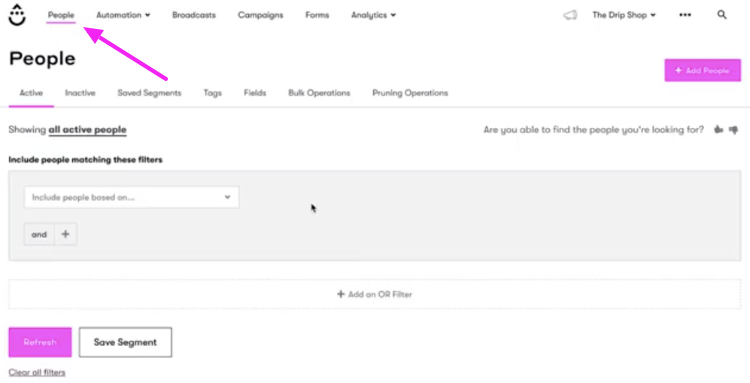 Use the filter at the top of this page to view and group people by shared behaviors like:
Use the filter at the top of this page to view and group people by shared behaviors like:
- Purchase history
- Website activity
- Email engagement
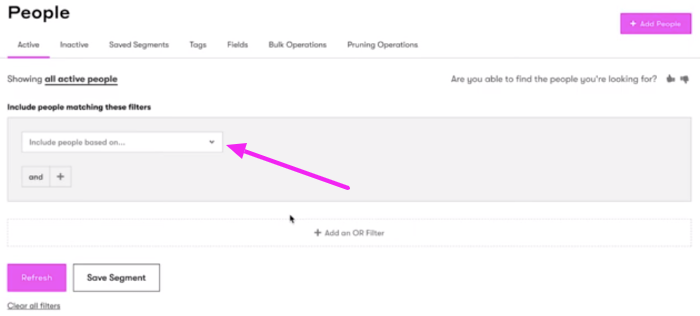 Once you create and save at least one segment, you can view recently edited segments on the left-hand side of the People page. (FYI we’ll automatically build and populate a segment called Everyone, which includes all active people in your account.)
Once you create and save at least one segment, you can view recently edited segments on the left-hand side of the People page. (FYI we’ll automatically build and populate a segment called Everyone, which includes all active people in your account.)
Pro tip: Take the time to explore our various criteria for building segments. There are a lot of options in Drip—browsing them can help inspire your next strategy.
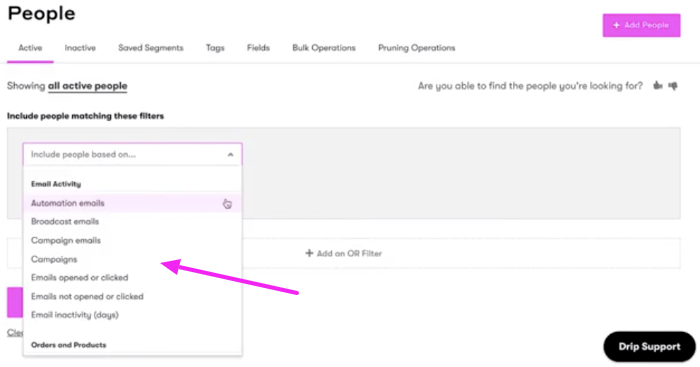 Okay, let’s walk through how to create a segment of your best, most loyal, highest-spending customers. First, select Purchase history from the drop-down menu on the People page, then filter by:
Okay, let’s walk through how to create a segment of your best, most loyal, highest-spending customers. First, select Purchase history from the drop-down menu on the People page, then filter by:
- Has placed an order…
- At least three times…
- Over all time…
- On any product…
- At any price…
- And in any quantity
Then add the criteria Lifetime value is greater than or equal to 200.
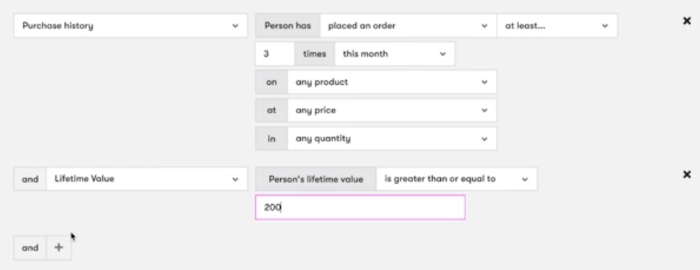 Note: You’ll want to edit the customer lifetime value figure to take into account your products and price points. If your top price is $50 and someone spends $200+ across three or more purchases, they’re clearly pretty bought into your brand. But if you only sell $1,000 mattresses, a $200 lifetime value is no indication of a loyal, high-spending customer.
Note: You’ll want to edit the customer lifetime value figure to take into account your products and price points. If your top price is $50 and someone spends $200+ across three or more purchases, they’re clearly pretty bought into your brand. But if you only sell $1,000 mattresses, a $200 lifetime value is no indication of a loyal, high-spending customer.
Once you’ve finished adding your criteria, click Save Segment and give your new segment a name (like “Best Customers”).
From there, you’ll be directed to a page that previews the first 25 people in your segment:
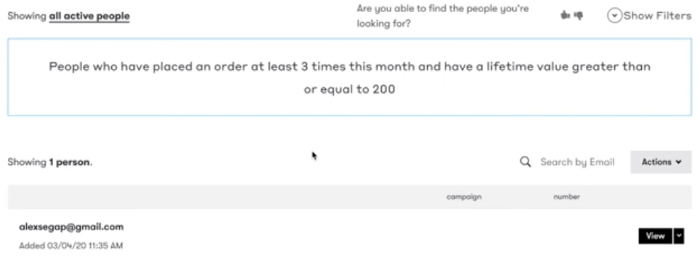 Going forward, anyone who meets the criteria laid out above will be automatically added to this segment.
Going forward, anyone who meets the criteria laid out above will be automatically added to this segment.
Congratulations, you’ve just created your first customer segment in Drip!
And that’s not all you can do. As well as helping you get to know your customers, Drip gives you actionable customer data to further hone your customer segmentation.
When you open any given you segment, you can click on an individual customer’s email address to access their Profile section, where you can find useful information such as their:
- Contact information
- Details about previous orders
- Website and email engagement history
You’ll also be able to view a chronological activity timeline of their interactions with your brand, giving you a better idea of the customer journey across channels.
For example, when we dig into Alex’s profile…
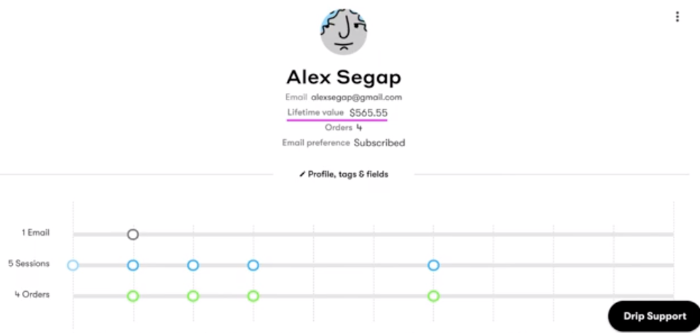 …we can see they have a lifetime value well north of $200. In short, they’re super loyal and love our brand. Our “Best Customers” segment tells us there are other people like Alex who feel the same, giving us an opportunity to reach out and grow our relationship with these high-spending shoppers.
…we can see they have a lifetime value well north of $200. In short, they’re super loyal and love our brand. Our “Best Customers” segment tells us there are other people like Alex who feel the same, giving us an opportunity to reach out and grow our relationship with these high-spending shoppers.
Use data from the Profile section to create different segments and build emails tailored to each.
Remember: Your goal here is to ensure customers only receive the information, recommendations, and offers that are most relevant to them.
But that’s only scratching the surface of Drip’s segmentation features. Find out what more we can do by signing up for your 14-day free trial!

Summing Up
Personalization isn’t just another marketing ploy. Customers actually expect it from you these days.
The best way to personalize at scale is to segment customers into different groups of people that have, for instance, similar values or similar purchase history. That way you can optimize the customer journey based on their particular needs and desires. Which ultimately leads to more revenue.
The way you choose to segment customers all depends on what you hope to achieve at the end of the day. So the next step for you is to go away and determine what your goals are. Only then can you begin to create customer segments in a meaningful way.
See for yourself by signing up for your 14-day free trial.
